Posts Tagged: pollinators
Monarch Butterflies as Pollinators
"More than beautiful, monarch butterflies contribute to the health of our planet. While feeding on nectar, they pollinate many types of wildflowers.--National Park Service. Have you ever seen pollen on a monarch butterfly? This morning a male migrating...
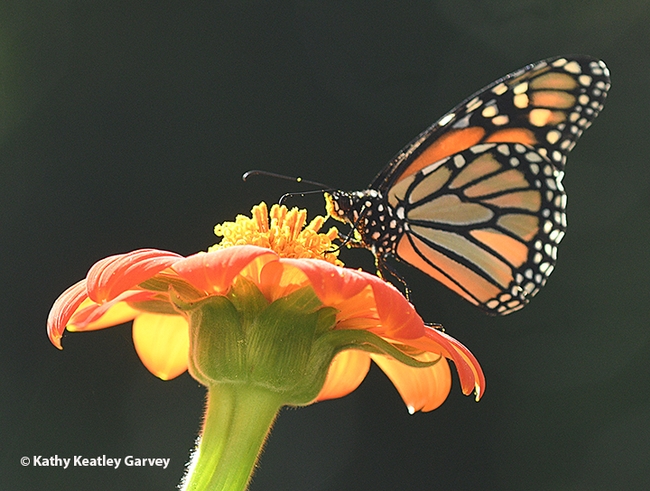
Bees are the most well known pollinators, but butterflies, including monarchs, are pollinators, too. This monarch butterfly, sipping nectar in a Vacaville garden, came up with a head full of pollen. (Photo by Kathy Keatley Garvey)
Scott McArt: The Risk of Pesticides to Pollinators
"The use of synthetic chemical pesticides is central to current agricultural practices worldwide. But what is the cost to wildlife via non-target exposures? This talk will summarize when there's risk to bees, when there isn't, and what types of...
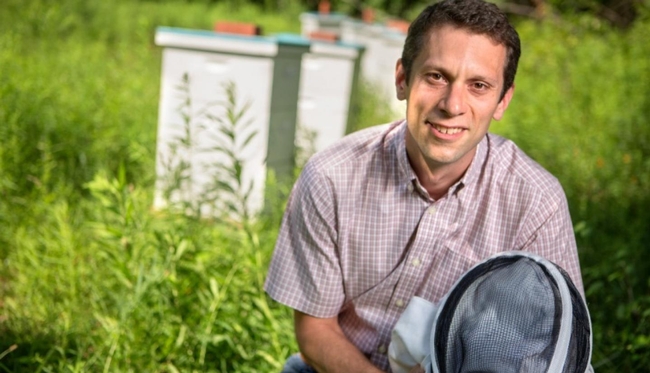
Scott McArt of Cornell will speak on "Pesticide Risk to Pollinators: What We Know and What We Need to Know Better" at the Wednesday, May 4 virtual seminar hosted by the UC Davis Department of Entomology and Nematology.
Seminar Topics: From Mammoth Wasps to Medflies to Nematodes
Ready to learn about mammoth wasps, medflies, nematodes and pesticide risks to polilnators, or delve into such topics as "Mystery of the Missing Microbes: Why Do Bees Keep Losing...
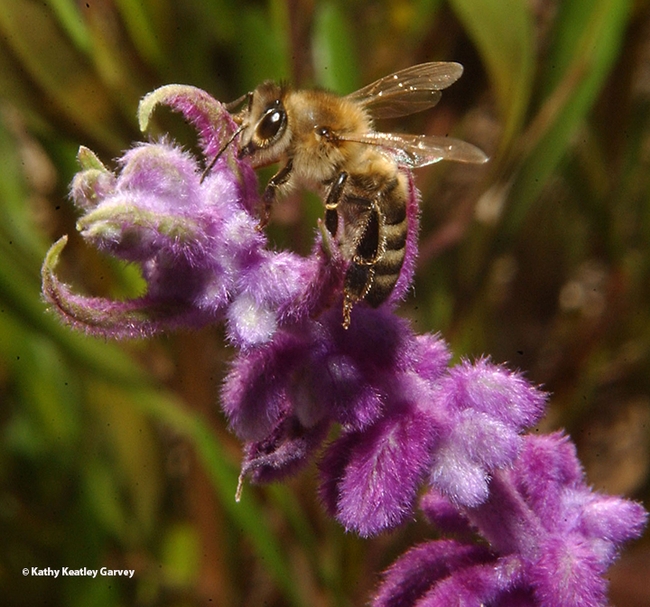
Bees will be among the spring seminar topics hosted by the UC Davis Department of Entomology and Nematology. UC Irvine faculty member Tobin Hammer will speak on "Mystery of the Missing Microbes: Why Do Bees Keep Losing Their Symbionts?" (Photo by Kathy Keatley Garvey)
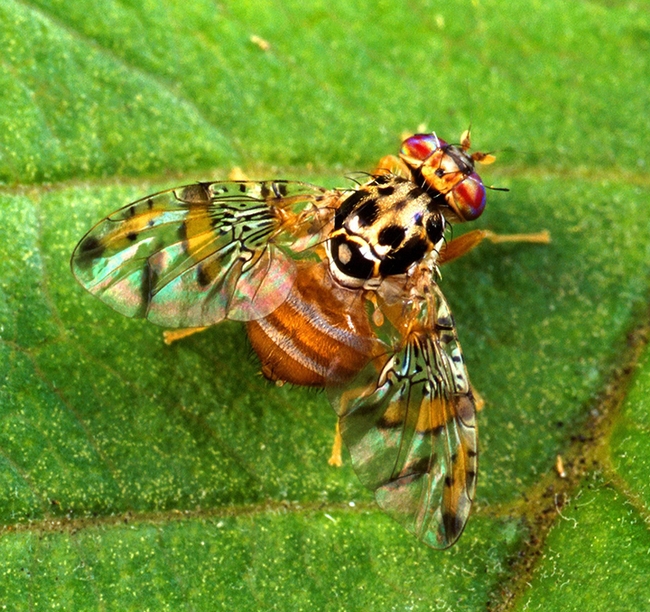
The Mediterranean fruit fly will be the topic of UC Davis distinguished professor James R. Carey's seminar on May 25. (Photo by Scott Bauer, U.S. Department of Agriculture)
Are Honeybees the Most Effective Pollinators?
There they were. Together. The scene: A honeybee (Apis mellifera) and a bumblebee (Bombus vosnesenskii) nectaring on a purple coneflower (Echinacea purpurea) in a UC Davis bee garden. If you've observed honeybees and wild bees foraging...
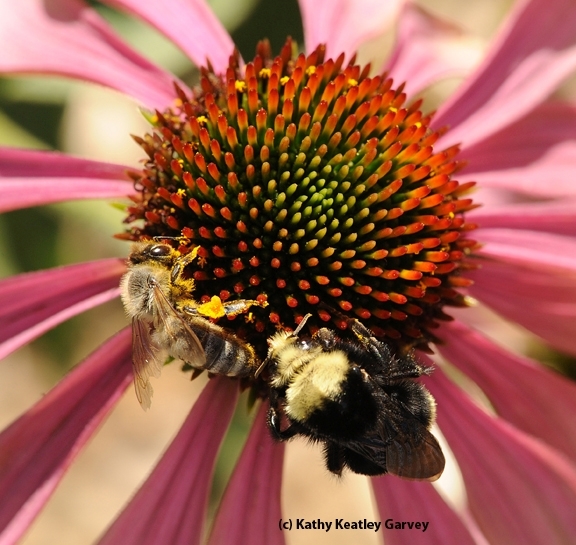
A honeybee (Apis mellifera) and a bumblebee (Bombus vosnesenskii) nectaring on a purple coneflower (Echinacea purpurea) in a UC Davis bee garden. (Photo by Kathy Keatley Garvey)
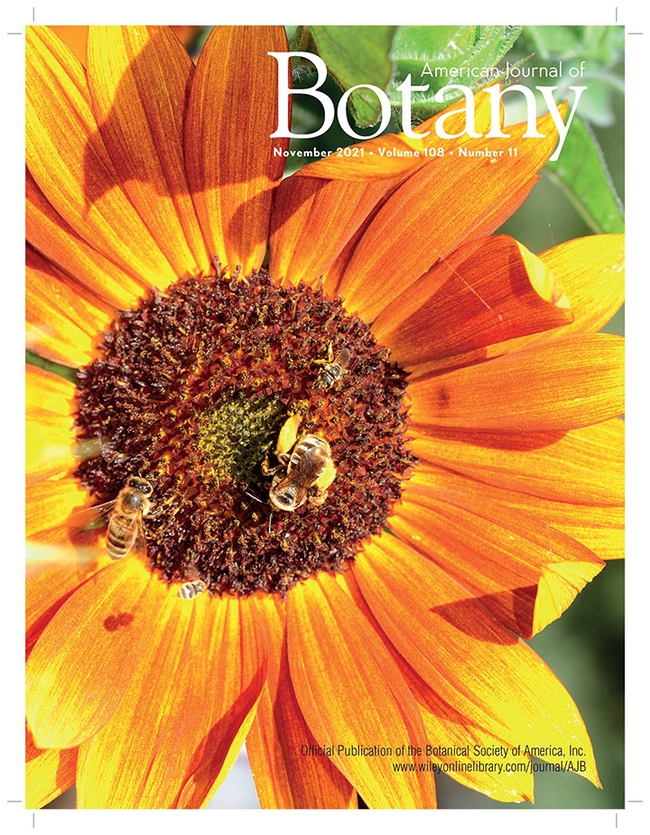
This is the cover of the American Journal of Botany, featuring several species of bees on a sunflower, Helianthus sp, (Cover photo by Kathy Keatley Garvey)
UC Davis Plant Sale May 20-24: Just Add Pollinators
If you want to draw pollinators to your yard, think of the plants for sale at the teaching nursery maintained by the UC Davis Arboretum and Public Garden. A public clearance sale will take place Thursday, May 20 through Monday, May 24, with members...
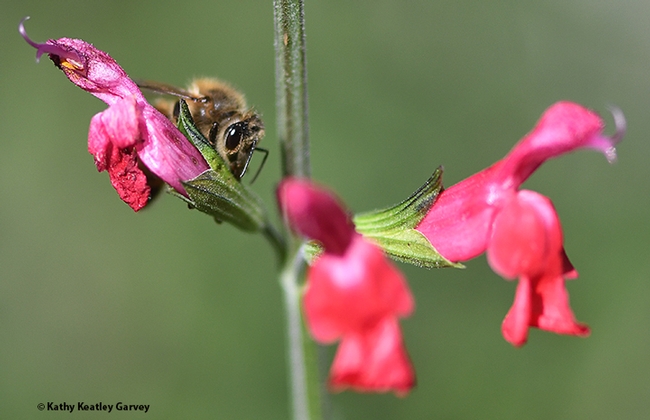
A honey bee foraging on Salvia "Hot Lips." (Photo by Kathy Keatley Garvey)
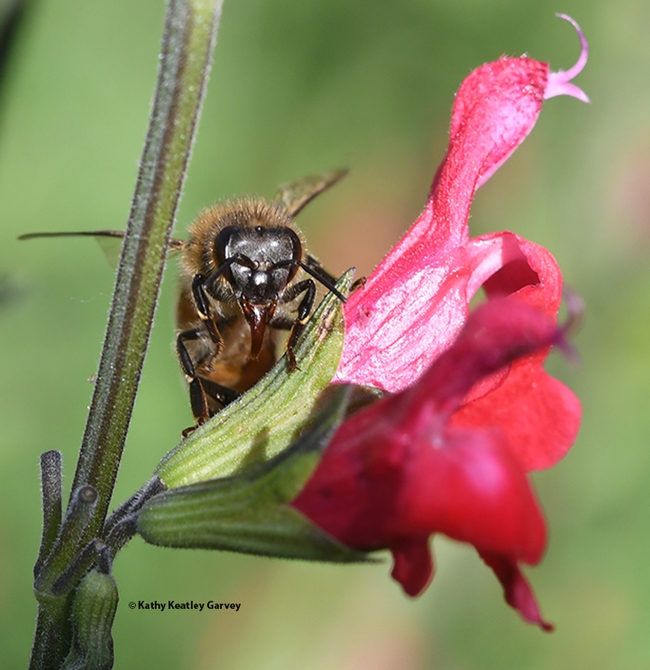
A honey bee, proboscis (tongue) extended, takes a liking to the Salvia "Hot Lips." (Photo by Kathy Keatley Garvey)
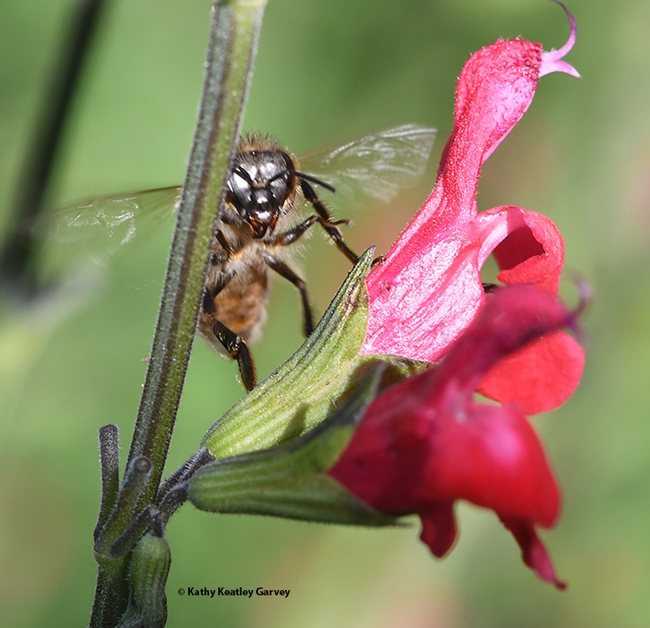
The honey bee checks out the photographer. (Photo by Kathy Keatley Garvey)
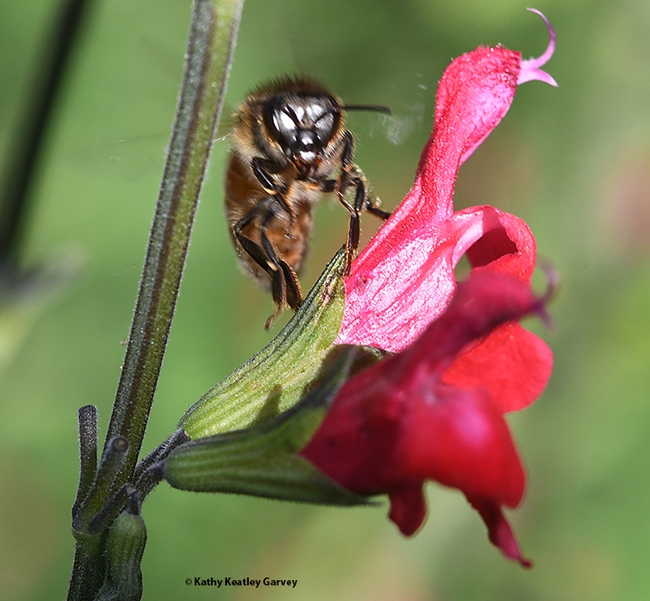
Flight time! The honey bee prepares to leave Salvia "Hot Lips." (Photo by Kathy Keatley Garvey)
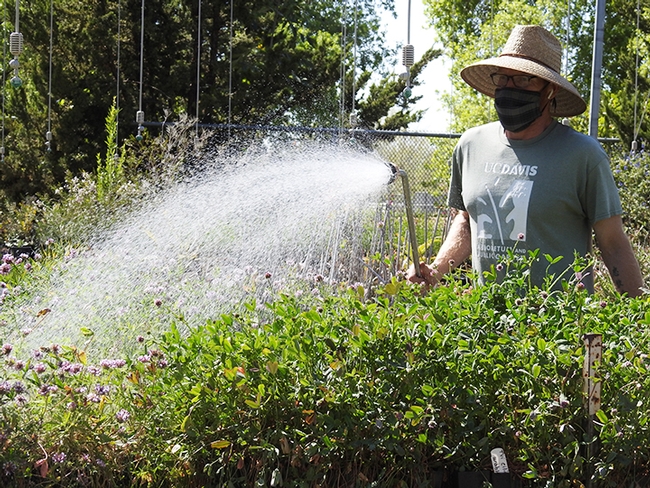
Nursery manager Taylor Lewis of the Arboretum Teaching Nursery, UC Davis Arboretum and Public Garden, tends to plants in the nursery. An online public sale is set May 20-24. (Photo by Kathy Keatley Garvey)
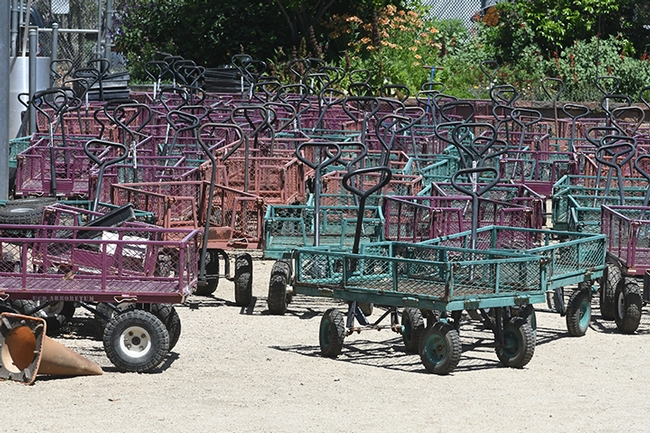
These carts will be in use with the UC Davis Arboretum's online plant sales take place May 20-24. Delivery is curbside.(Photo by Kathy Keatley Garvey)

